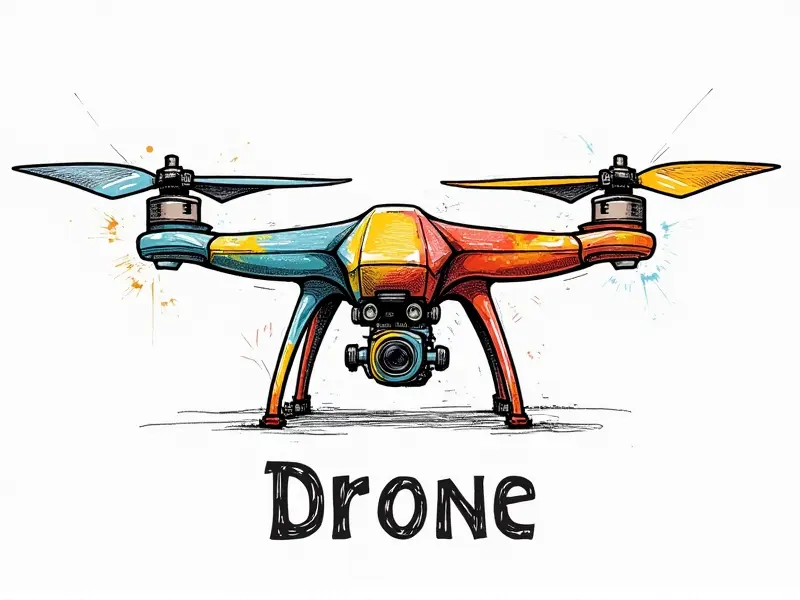How to stabilize a drone video?

Master Drone Video Stability Techniques
Drone video stabilization is crucial for capturing smooth, professional-looking footage. Whether you're an amateur or a seasoned drone pilot, mastering these techniques can significantly enhance the quality of your aerial shots.
Secrets to Smoother Drone Video Footage
- Use a Gimbal: A gimbal is essential for stabilizing your drone's camera. It counteracts vibrations and movements, ensuring that your footage remains steady even during high-speed flights.
- Adjust Camera Settings: Fine-tune your camera settings to optimize stability. Adjust ISO, shutter speed, and frame rate according to the lighting conditions and desired shot quality.
Achieving Perfectly Stable Drone Shots
To achieve perfectly stable drone shots, it's important to understand the role of each component in your setup:
- Drone Model: Choose a drone with built-in stabilization features. Modern drones like DJI Mavic Pro and Phantom 4 offer advanced gyroscopes and GPS systems that enhance stability.
- Camera Quality: Invest in high-quality cameras designed for aerial photography. Cameras with image sensors specifically optimized for low-light conditions can capture clearer, more stable footage.
Top Tricks for Stable Drone Videos
Here are some top tricks to ensure your drone videos remain smooth and professional:
- Pre-flight Checks: Always perform a thorough pre-flight check. Ensure that all components, including the gimbal and camera, are properly calibrated.
- Flight Planning: Plan your flight path carefully to avoid obstacles and maintain steady movements. Use waypoints or follow-me modes for consistent tracking.
Enhance Your Drone Video Quality with These Tricks
In addition to basic stabilization techniques, consider these advanced tips to elevate the quality of your drone videos:
- Post-Processing Software: Utilize post-processing software like Adobe Premiere Pro or Final Cut Pro for additional smoothing and stabilization. Tools such as Warp Stabilizer can significantly enhance footage.
- Lens Quality: Use high-quality lenses to reduce distortion and improve sharpness, contributing to overall stability and clarity in your videos.
Easy Fixes for Wobbly Drone Clips
If you've already captured wobbly drone clips, don't worry. Here are some quick fixes:
- Stabilization Plugins: Apply stabilization plugins in editing software to correct minor shakes and vibrations.
- Manual Adjustments: Manually adjust the footage frame by frame for precise control over stability issues.
Boost Your Drone's Video Stability Today
To boost your drone’s video stability, follow these practical steps immediately:
- Upgrade Components: Consider upgrading to a more advanced gimbal or camera system if you're experiencing persistent instability.
- Regular Maintenance: Keep your drone and its components well-maintained. Regular cleaning and calibration can prevent performance issues that lead to unstable footage.
Tips for Stabilizing FPV Racing Drone Footage
FPV racing drones require special attention due to their high-speed nature:
- Lightweight Gimbals: Use lightweight gimbals designed specifically for FPV racing. These are optimized for quick movements and can handle the rigors of fast-paced flying.
- Advanced Camera Settings: Adjust camera settings to prioritize frame rate over resolution, ensuring smoother playback during high-speed maneuvers.
Maximize Stability in Your Drone Clips
To maximize stability in your drone clips, focus on the following aspects:
- Flight Altitude: Fly at a consistent altitude to maintain steady footage. Avoid sudden changes that can cause unwanted movements.
- Wind Conditions: Be mindful of wind conditions during flight. Strong winds can affect stability, so choose calm days for optimal results.
Ultimate Guide to Stabilizing Drone Video
The ultimate guide to stabilizing drone video involves a combination of hardware and software solutions:
- Hardware Upgrades: Invest in high-quality gimbals, cameras, and drones designed for stability.
- Software Enhancements: Utilize advanced editing tools to further refine your footage. Software like DaVinci Resolve offers powerful stabilization features.
Quick Hacks for Smoother Drone Cinematography
Here are some quick hacks to achieve smoother drone cinematography:
- Use a Tripod: When shooting from the ground, use a tripod with a gimbal head to stabilize your camera.
- Practice Slow Movements: Practice flying your drone in slow, deliberate movements. This helps train you to maintain stability during actual flights.
Conclusion
Mastery of drone video stabilization techniques is essential for any serious aerial photographer or videographer. By incorporating the tips and tricks outlined above, you can significantly improve the quality and smoothness of your drone footage. Whether you're shooting FPV racing drones or capturing stunning landscapes, these methods will help you achieve perfectly stable shots every time.

